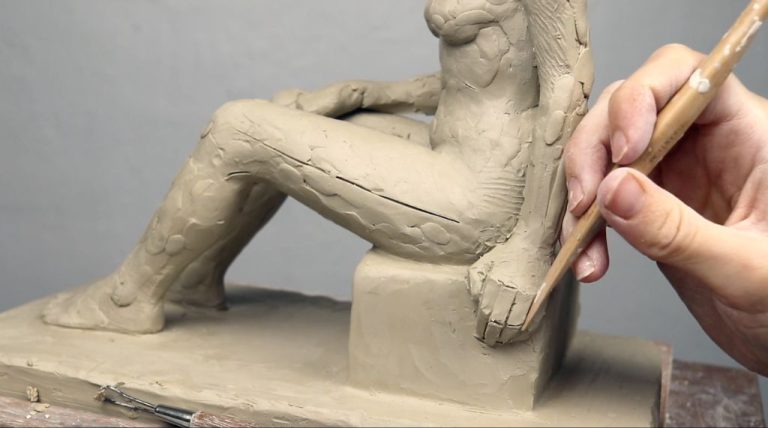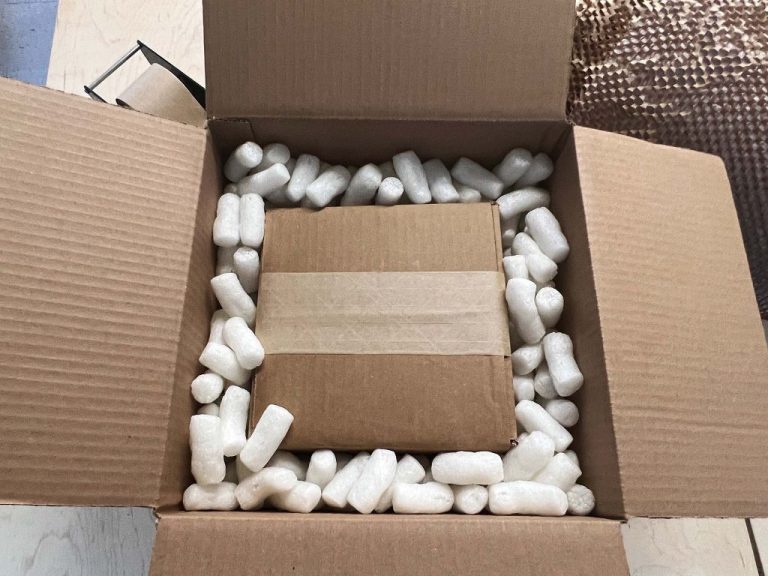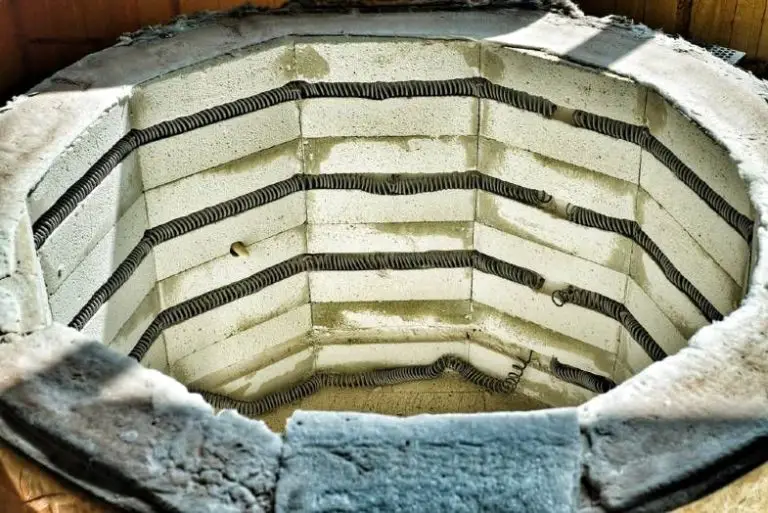What Surfaces Does Clay Not Stick To?
Clay is a fine-grained natural material made up of minerals that is pliable when wet and hard when fired at high temperatures. The sticky or adhesive quality of clay when moist is due to its chemical composition. Clay particles carry an electrostatic charge that allows them to attract and cling to other surfaces. However, not all surfaces are equally receptive to wet clay. The stickiness depends on the texture and composition of the material clay comes into contact with.
Smooth, non-porous, greased, floured, or waxed surfaces can prevent clay from adhering due to their slippery textures or water resistance. Rough and porous materials like paper provide the texture and absorption wet clay needs to grip. Understanding what enables clay to stick or not stick is helpful when choosing work surfaces for clay modeling or preventing messes during clay projects.
Smooth Surfaces
Clay does not stick well to smooth, nonporous surfaces. Materials like glass, metal, plastic, and finished wood provide a slick, even surface that clay has difficulty adhering to. When clay is pressed onto these types of smooth surfaces, it does not penetrate or grip the surface, which prevents it from sticking effectively. This is because materials like glass, metal, plastic and finished wood lack microscopic pores, indentations or roughness for the clay to cling to. Their slippery smoothness makes it easy for the clay to be peeled or slid off without leaving any residue behind.
For example, a sheet of glass has an exceptionally smooth surface at a microscopic level. When clay is pressed onto glass, the clay simply rests on top of the surface rather than penetrating or grabbing hold. This allows the clay to be easily removed from the glass intact. The same goes for plastics, metals like stainless steel, and wood that has been lacquered or treated with polyurethane. Their slippery smooth finishes prevent the clay from adhering. So clay tends to just slide right off these types of nonporous smooth surfaces.
Non-Porous Materials
Clay does not stick well to non-porous surfaces because it cannot penetrate into the material. Non-porous materials have a very dense molecular structure that does not allow liquids or gases to pass through. Examples of non-porous materials that clay will not adhere to include metals, glass, plastic, and finished wood. The slick surface of these materials prevents the clay from finding any grooves or texture to grip onto. Additionally, because non-porous surfaces do not absorb any moisture, the clay cannot form bonds between the material and the moisture in the clay. This lack of penetration and absorption allows non-porous surfaces to repel the clay entirely.
Greased Surfaces
Greasing a surface before working with clay creates a barrier that prevents the clay from sticking. Oils and fats don’t absorb water, which means grease will repel the water in clay and stop it from adhering.
Any type of cooking oil or butter can be used to grease a work surface. A thin layer applied to a countertop, baking sheet, or sculpture tool will allow the clay to be lifted off cleanly after use. The clay won’t penetrate the greased barrier or leave any residue behind.
Silicone baking mats are a readily available greased surface for clay work. The silicone coating stops the clay from bonding, so pieces can be removed intact after baking or drying. Reusable and able to withstand high temperatures, silicone mats are a convenient option for protecting worktables and oven trays from stuck on clay.
Floured Surfaces
Flour is commonly used by bakers, sculptors, and crafters working with clay to keep their clay from sticking to surfaces. When a surface is lightly dusted with flour, the tiny particles get lodged between the clay and the surface, preventing them from making direct contact.
The flour essentially creates a protective barrier so the clay cannot properly adhere. As the clay is manipulated on the floured surface, the flour continues filling in any potential sticking points between the two materials. This allows the clay to be rolled, kneaded, shaped, and molded without bonding to the work surface underneath.
Almost any variety of baking flour can be used for this technique, from all-purpose to cake flour. The key is applying just a light coating so the flour presence is minimally detected in the final clay product. Too much flour can leave dough dry and crumbly. With the right amount sprinkled on a work surface, floured surfaces provide the perfect non-stick, workable environment for clay.
Waxed Paper
Waxed paper is an excellent non-stick surface for working with clay. The wax coating applied to the paper creates a barrier that stops the clay from adhering. When rolling out or shaping clay, laying down a sheet of waxed paper first allows for easy lift off when you’re done. The clay won’t stick at all to the waxed surface. This makes waxed paper ideal for preventing messes and keeping your work area clean. Simply lay it down where you plan to work, and you can smoothly peel the paper away when finished, leaving no clay residue behind.
Waxed paper is inexpensive and readily available in grocery stores, making it a convenient clay release surface. It can be cut to size as needed for different projects. The wax coating also gives it a slight gloss, which can create an attractive background for displaying clay creations. Waxed paper is disposable and replaceable, so it can simply be thrown away when too messy. It’s a versatile, economical and effective non-stick surface for any clay work.
Plastic Wrap
Plastic wrap, also known as cling film, is a great non-stick surface for clay. The smooth and non-porous plastic material prevents clay from bonding. When clay is placed on plastic wrap, it won’t stick or leave any residue behind. The slippery surface stops the clay from adhering.
Plastic wrap creates a barrier between the work surface and the clay. This allows for easy lifting and transferring of clay pieces without deformation. The clay can be molded directly on the plastic wrap, and then the entire piece peeled off intact when finished. This makes plastic wrap useful for sculpting and preventing clay from sticking to hands and tools during the creation process.
Sandpaper
Sandpaper is a great surface that resists clay sticking due to its rough, abrasive texture. The gritty surface of sandpaper prevents clay from forming an adhesive bond. When clay comes into contact with sandpaper, the rough, coarse grains keep the clay from penetrating into pores and grabbing onto the material.
The sanding particles that cover the surface of sandpaper provide a barrier that clay cannot grip well. The sharp, irregular edges of the sand prevent the soft clay from attaching tightly to the sandpaper. Because there are no smooth areas for the clay to grab and bind to, the clay simply slides off the textured surface.
Sandpaper’s abrasive construction gives it an extremely bumpy profile under a microscope. The peaks and valleys make it impossible for clay to stick effectively. Applying pressure when working with clay on sandpaper will not cause it to adhere any better. The rigidity of the sanding material means the clay cannot penetrate or grab hold even when flattened out. The sand simply provides too rough of a texture for clay bonding.
Liquid Barrier
Oils and water create an effective barrier between clay and many surfaces. When a thin layer of oil or water is applied to a surface, it prevents the clay from directly contacting and sticking to that surface. For example, lightly greasing or oiling a baking sheet will allow clay sculptures or baked clay items to be removed easily after baking. Similarly, working clay on a surface wetted with water will prevent sticking. The water or oil essentially creates a slippery interface between the clay and surface, so the two materials do not bind together well.
Oils that can be used for this purpose include vegetable, olive, or coconut oil. Even just rubbing exposed skin where clay will be contacting can provide enough body oil to create a usable barrier. For water, simply wetting the surface evenly before working with the clay will suffice. The liquid barrier method is useful when working on non-traditional surfaces where clay may stick more aggressively.
Conclusion
In summary, there are several types of surfaces that clay does not stick well to. Smooth, non-porous materials like glass, metals, and glossy finished wood provide a slick surface that clay has difficulty adhering to. Greasing a baking sheet or countertop with cooking oil or butter can create a temporary non-stick barrier. Lightly dusting a work surface with flour prevents clay from sticking. Waxed paper and plastic wrap act as removable non-stick layers that clay won’t permeate. Rough textures like sandpaper disrupt the clay’s ability to cling to a surface. Applying a liquid like water or oil to a material fills pores and creates a slippery plane. Testing different materials to find ones that clay releases from can make sculpting, rolling, and storing clay easier. With some preparation and experimentation, non-stick surfaces for clay projects can be achieved.



